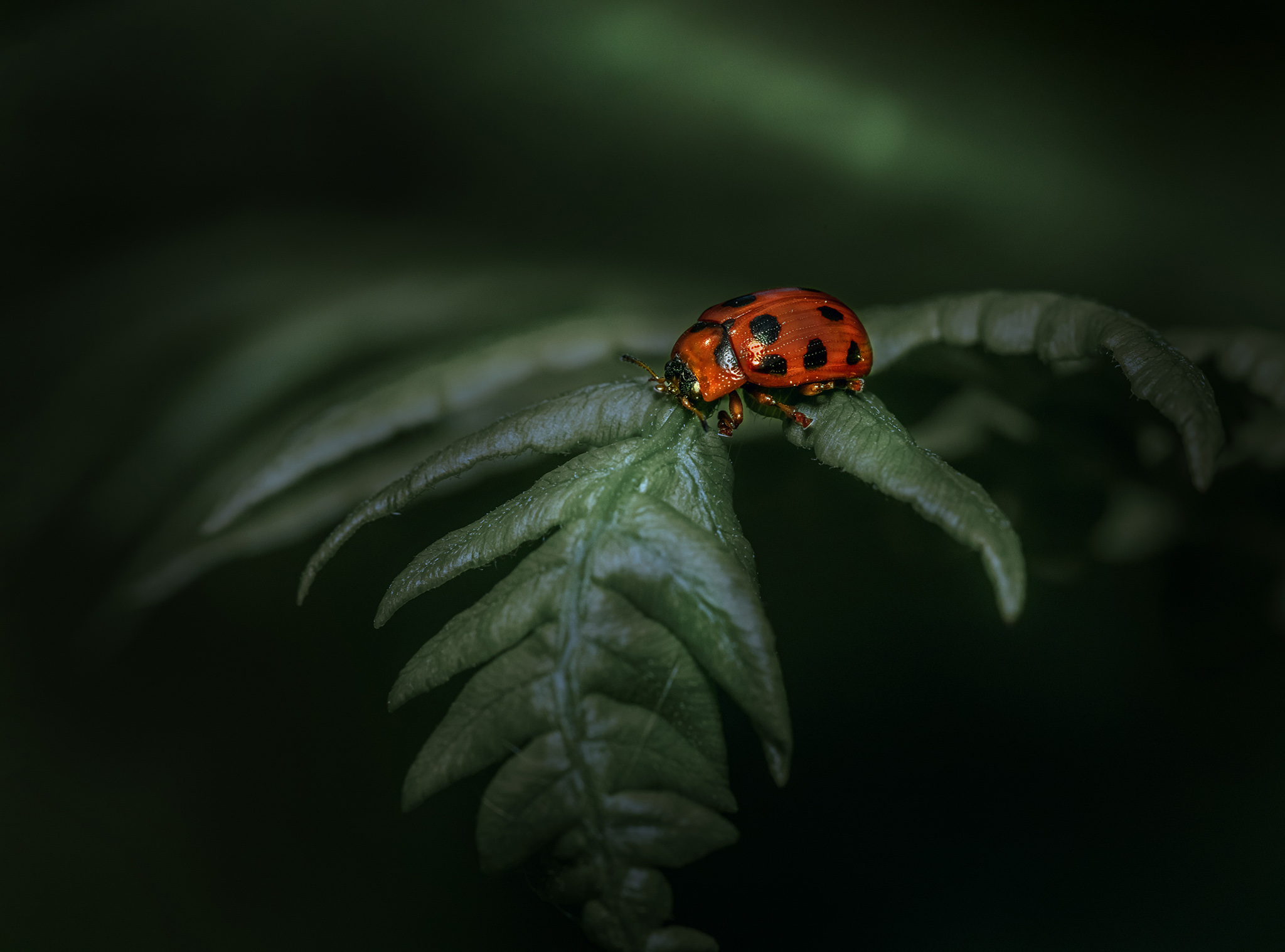Here’s a full overview of the American Aspen Beetle (Gonioctena viminalis), a striking leaf beetle found across Eurasia and associated mainly with willow and aspen trees:
American Aspen Beetle (Gonioctena viminalis)
Taxonomy & Classification
- Kingdom: Animalia
- Phylum: Arthropoda
- Class: Insecta
- Order: Coleoptera
- Family: Chrysomelidae (Leaf beetles)
- Subfamily: Chrysomelinae
- Genus: Gonioctena
- Species: G. viminalis
- Common names: American Aspen Beetle, Willow Leaf Beetle, Viminalis Leaf Beetle
Identification & Description
- Length: 5–7 mm.
- Shape: Oval, convex, and compact body typical of leaf beetles.
- Coloration:
- Elytra (wing covers) are reddish-brown to orange, often with faint darker markings or spots.
- Pronotum (behind the head) and head are usually black or dark brown.
- Legs and antennae dark with lighter bases.
- Sexes: Similar in appearance; males may be slightly smaller.
- Larva: Soft-bodied, greyish to blackish, often covered in fine granules or a waxy coating.
Distribution
- Native range: Widespread across Europe, northern Asia, and parts of Central Asia.
- Common in: Scandinavia, the Baltic countries, and much of central and eastern Europe.
- Despite the name “American Aspen Beetle,” it is not native to North America—the name comes from its feeding preference for aspen (Populus tremula), sometimes called “European aspen.”
Habitat
- Found in woodlands, forest edges, wetlands, riverbanks, and parks.
- Prefers areas where willows (Salix) and aspens (Populus) grow.
- Both adults and larvae live on the foliage of these host trees.
Feeding & Ecology
- Diet:
- Host plants: Primarily willows (Salix viminalis, S. caprea) and aspen (Populus tremula).
- Feeding habits:
- Adults: Feed on leaf surfaces, creating irregular holes or notches.
- Larvae: Skeletonize leaves, leaving only veins and lower epidermis.
- Impact:
- Heavy infestations can cause defoliation, though trees usually recover.
- Plays a role in forest ecosystem balance as prey for birds and predatory insects.
Life Cycle
- Overwintering: Adults overwinter in leaf litter, under bark, or in soil near host trees.
- Activity period: Late spring to early autumn.
- Reproduction:
- Adults emerge in spring and begin feeding and mating.
- Eggs are laid in small clusters on the underside of leaves.
- Larvae hatch after about a week, feeding for 2–3 weeks before pupating in the soil.
- Pupation: Takes 1–2 weeks, after which new adults emerge.
- Generations: Typically one generation per year in northern Europe; two in warmer climates.
Behavior
- Adults are good fliers and can disperse widely in search of suitable host plants.
- Often drop from leaves when disturbed.
- Exhibit defensive reflex bleeding—exuding orange hemolymph containing bitter chemicals to deter predators.
Predators & Natural Enemies
- Eaten by insectivorous birds, spiders, and predatory beetles (e.g. Coccinellidae).
- Parasitized by tachinid flies and braconid wasps.
- Fungal infections may occasionally affect overwintering adults.
Conservation Status
- IUCN Red List: Not evaluated; locally common and widespread.
- Populations are generally stable and not threatened.
- Beneficiary of mixed woodland management and wetland conservation, as it depends on willow and aspen habitats.
Interesting Facts
- The species name viminalis refers to willows (Salix viminalis), one of its preferred host plants.
- Adults are active and colorful, often seen sunning on leaves during warm days.
- Plays a role in nutrient cycling, as its feeding accelerates leaf turnover in riparian zones.
- Often mistaken for other Gonioctena species (e.g. G. quinquepunctata or G. decemnotata), which differ mainly in elytral spot patterns.
Visited 851 times, 1 visit(s) today
Views: 2080
Subscribe to the newsletter:
